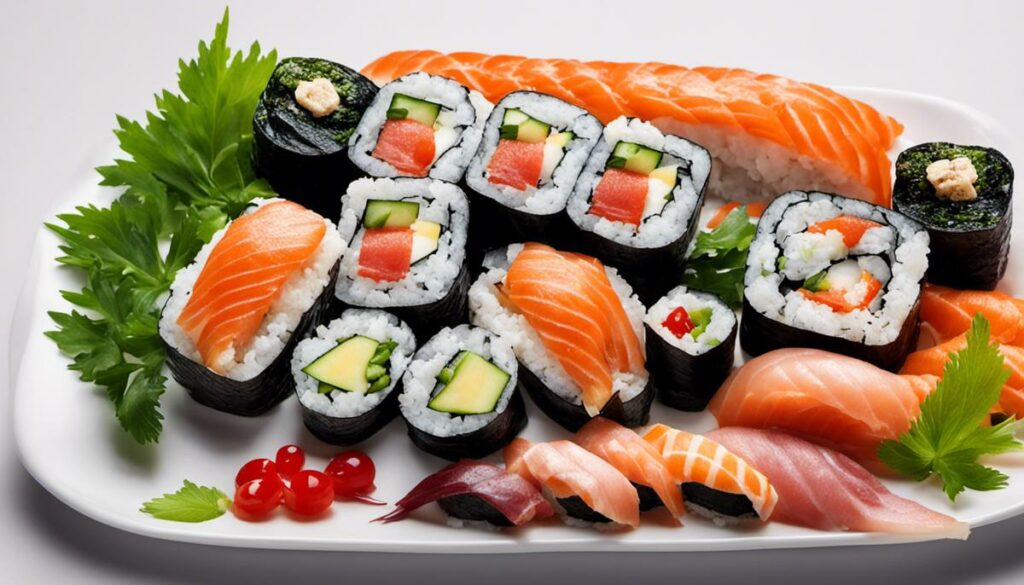Sushi, the traditional Japanese snack, is now a culinary trend all over the world. In addition to taste, aesthetics also play a major role in its consideration, as can be clearly seen in all-you-can-eat sushi restaurants in particular. The handsome presentation with loving detail work in the design of the individual sushi appetizers is decisive here. But can this aesthetic be maintained with an all-you-can-eat concept? In addition, the all-you-can-eat concept triggers a discussion between food trends and quality. In the context of this discussion, this essay aims to clarify the question of whether all-you-can-eat sushi is a blessing or a curse. The health aspects are also critically examined.
Aesthetics and presentation
The aesthetic of an all-you-can-eat sushi restaurant is a crucial aspect of the overall impression. It’s all about bringing guests closer to the charm of Japanese culture while providing a complete taste experience .
From the moment you step through the doors of an all-you-can-eat sushi restaurant, you’re likely to be greeted by a modern and structured atmosphere. The ambience is relaxed, yet sophisticated, and every detail seems aesthetically focused. The lighting is subtle to create an intimate atmosphere while still providing enough light to highlight the beautifully presented plate.
At first glance, the presentation of the sushi platters will certainly stand out. Each plate is a work of art, arranged with a precision that only years of practice can provide. Colorful ingredients, such as fresh avocado, pale yellow omelette and the deep purple of eel , are perfectly arranged against the white of the sushi rice , creating a visually appealing image.
The selection of sushi pieces speaks for itself. Whether it’s traditional maki rolls, exciting tempura rolls , or a simple piece of nigiri, every mouth is a taste sensation. The presentation is always a highlight, with every piece that has its moment on the plate.
But the fascination of the presentation doesn’t end with the food. With a generous range of beverages, including sake and Japanese beers, every sip is added to another dining experience.
Although you can eat as much as you want here, it’s clear: all-you-can-eat sushi restaurants are all about quality and aesthetics, not quantity. By emphasizing the authenticity of their dishes and the care of their presentation, these restaurants create an experience that leaves you wanting more. This is real food culture!
Whether you’re an experienced sushi connoisseur or a newbie, eating at an all-you-can-eat sushi restaurant is always an experience not to be missed. It is not only an opportunity to enjoy exquisite food, but also to appreciate the art and culture behind it. A visit to such a restaurant can be anything but ordinary.
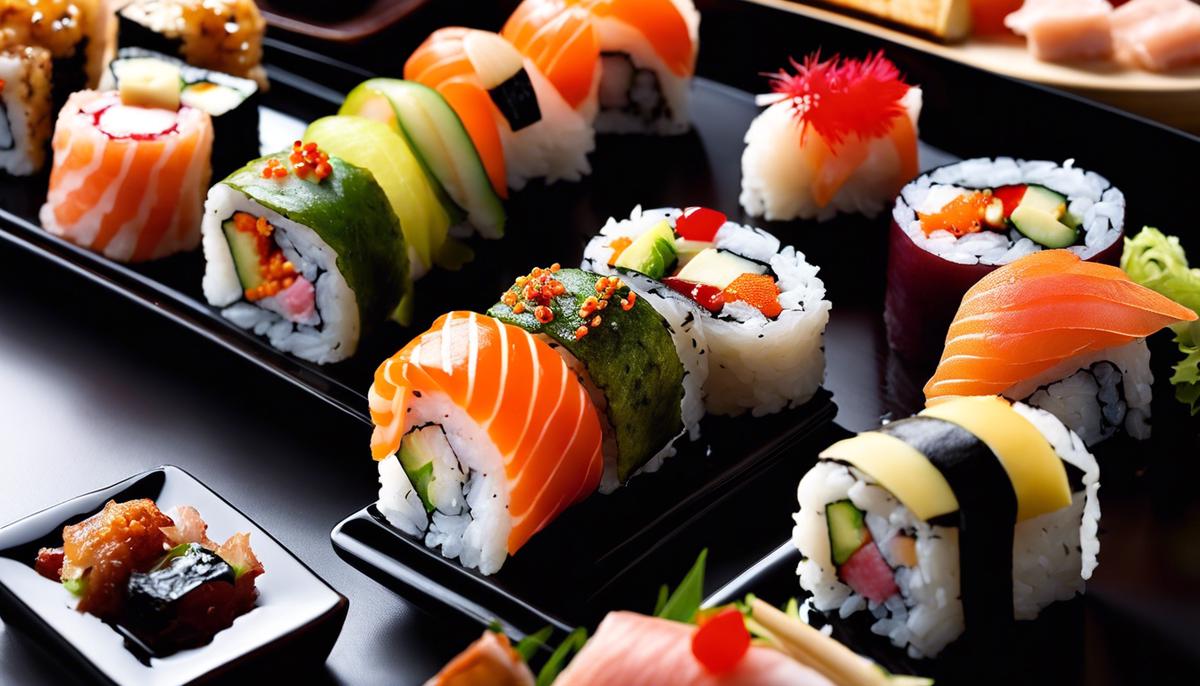
Food Trends: All-You-Can-Eat Sushi
All-you-can-eat sushi is more than just a food option; it is an experiential journey that goes beyond mere culinary enjoyment. You could say it’s a process of creative contemplation of one’s own palat, an experiment at the limits of taste. That’s what makes all-you-can-eat sushi so fascinating. It makes you realize the freedom to eat without limits, coupled with the beauty of Japanese cuisine.
Every single piece of sushi reflects the sushi chef’s pride and passion. Every detail, from the temperature of the rice to the thickness of the fish slice, is carefully planned and executed. It’s like a performance where the chef plays the lead role and the audience sits in anticipation of the next exquisite piece of sushi.
All-you-can-eat sushi is a type of experience you share with friends. Discovering and tasting different types of sushi together connects and enriches social interactions. In addition, it offers a welcome alternative to the standardized Western diet and allows guests to expand their culinary horizons.
One aspect that cannot be ignored is sustainability. Fish is a valuable resource, and the demand for sushi is steadily increasing. It is therefore important to choose responsibly and pay attention to the origin and quality of the fish. Restaurants that operate all-you-can-eat concepts should be aware of this responsibility and offer sustainably caught fish whenever possible.
In conclusion, whether all-you-can-eat sushi is a current food trend or just a commercial concept, it’s definitely a treat. It offers a unique dining experience that combines the beauty and diversity of Japanese food. It is a form of socialism at the table that brings people together and contributes to the preservation of the art and tradition of sushi.
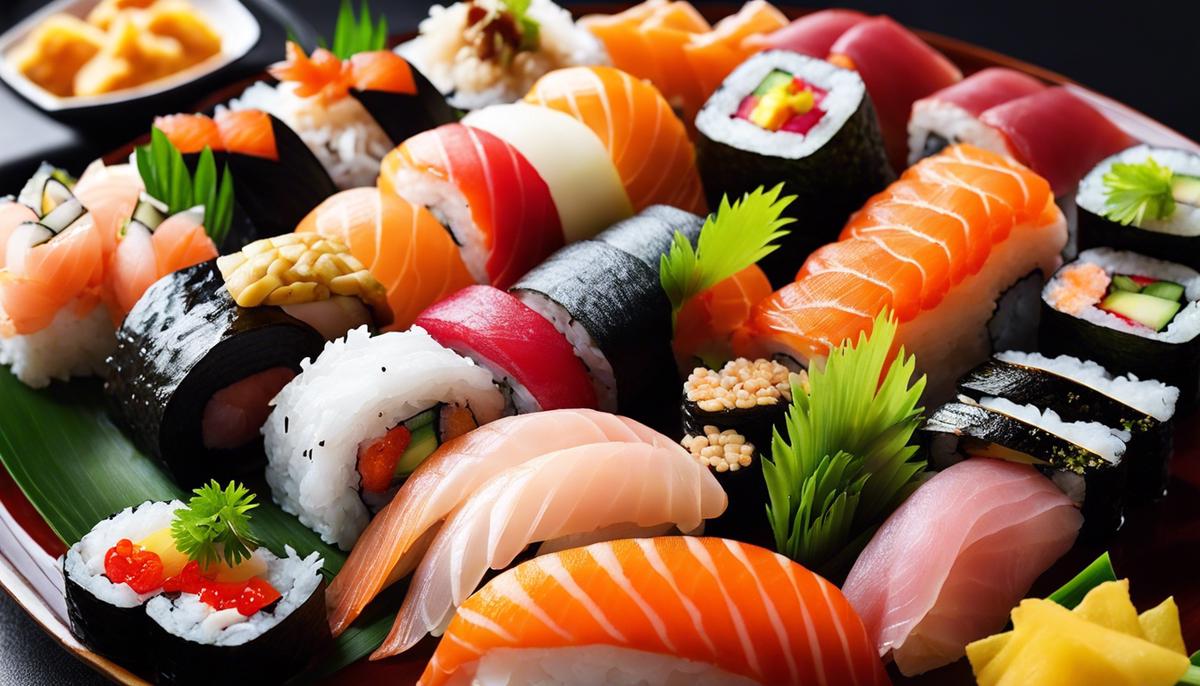
Quality vs. Quantity
The impact of all-you-can-eat sushi on more than just the dining experience
Your gourmet heart will beat faster when the all-you-can-eat aspect extends not only to the offering, but also to the culinary passion of every piece of sushi produced. It opens doors to countless taste adventures that you might otherwise have overlooked, and allows you to push your own taste boundaries and experiment. So much more than just a meal – it’s an exploration of the world of flavours, a feast for the senses.
Sushi as a basis for conviviality and interaction
Embedded in the dining experience, the all-you-can-eat sushi is not only a challenge for the palate, but also an excellent tool for social interactions. In the warm and friendly atmosphere of a sushi restaurant, surrounded by feelings of happiness and a sensual variety of tastes, many lively conversations and newly established social contacts can arise. Sushi is more than just a meal – it’s a platform for socializing and interacting!
The opportunity to broaden culinary horizons
An all-you-can-eat experience allows for the opportunity to explore the variety of different types of sushi. From nigiri to maki, tempura to unagi, each variety offers a unique insight into the art of sushi making and its deep roots in Japanese culture.
Sustainability and responsible sourcing of fish as a priority
An all-you-can-eat sushi experience isn’t just defined by variety and aesthetics. Another important aspect is the sustainable and responsible sourcing of the fish. This is becoming an increasingly important issue, and many restaurants are placing great emphasis on it – for the preservation of the oceans and the species that live in them, but also to ensure the quality of each sushi creation.
All-you-can-eat sushi as a current food trend
In today’s trend-driven world, all-you-can-eat sushi has also established itself as a commercial concept. It has become popular far beyond Japan’s borders and is enjoyed in many cities around the globe. This trend continues to rise, which says a lot about the quality and influence of this particular food culture.
In conclusion, all-you-can-eat sushi offers a unique culinary experience. It beautifully combines the beauty and diversity of Japanese food culture, opening the doors to a world of taste and creating an unforgettable overall experience. An experience that goes far beyond eating.
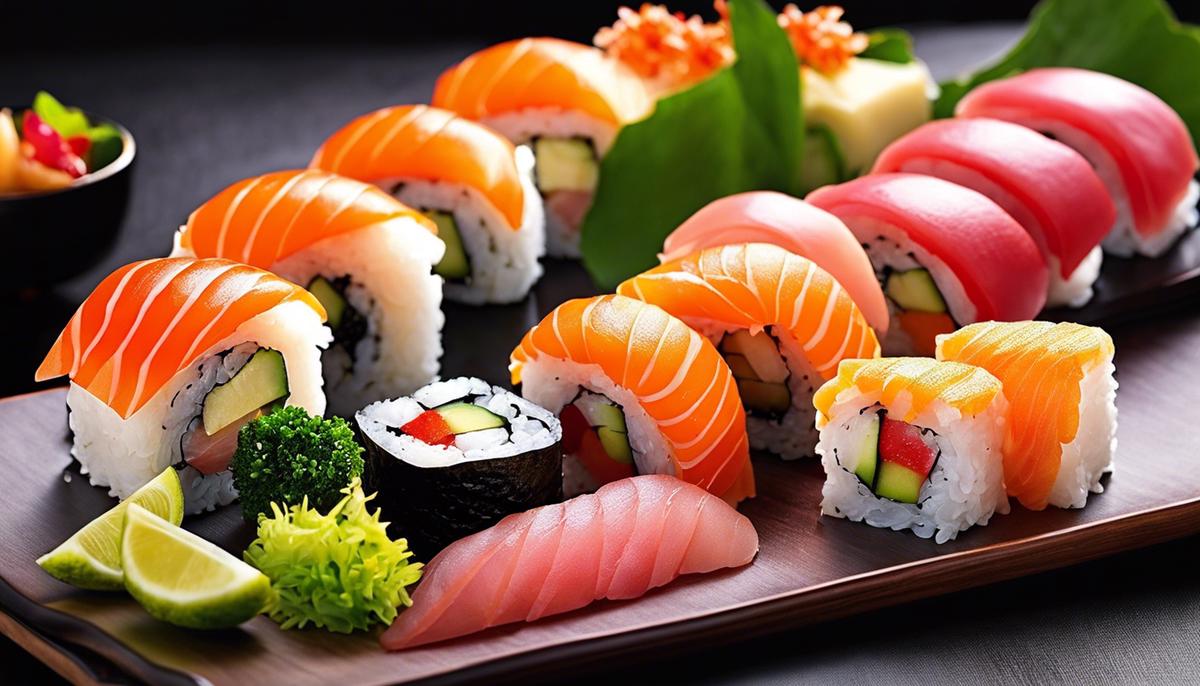
Health aspect
The excessive passion for sushi in society and what to think about it
In this day and age, where people consciously deal with every bite and think about the origin and sustainability of food, there is no doubt that sushi is a strong trend. But there are concerns about excessive sushi consumption.
The “all-you-can-eat” element in sushi restaurants has created a mixed picture. The freedom of consumption without restrictions could potentially lead to excessive consumption. However, this does not necessarily have to be negative. Enjoyed in moderation, sushi is an excellent way to incorporate fish, vegetables, and rice into the diet as a healthy food source.
But as with anything, too much sushi can also have negative health effects on us. One of the main causes would be mercury pollution. Fish, especially larger species such as tuna, can contain high amounts of mercury, which accumulates in the human body due to excessive consumption and can lead to neurological disorders in the long term.
The next is the danger of raw fish, which can bring parasites or bacteria that can lead to disease. Another concern would be the large amounts of white rice, which help increase daily carbohydrate consumption and blood sugar levels.
It is also important to note that the usual side dish soy sauce contains a significant amount of salt, which can lead to high blood pressure if consumed in large quantities.
Sushi, prepared in moderation and with care, brings a multitude of positive aspects to the food culture and offers us a beautiful way to enjoy and appreciate what the sea has to offer us. However, if consumed in excess, health concerns may arise.
Sushi should always be enjoyed in moderation and with awareness. It is more than the sum of its parts: it is a way of living, thinking and perceiving with respect for the environment and an appreciation for its delicacies.
Finally, as with any trend, excessive sushi consumption can have its downsides. You should not lose your sense of proportion and make sure that the joy of the sushi experience does not become a burden on your health. Always remember: balance is the key to a good lifestyle.
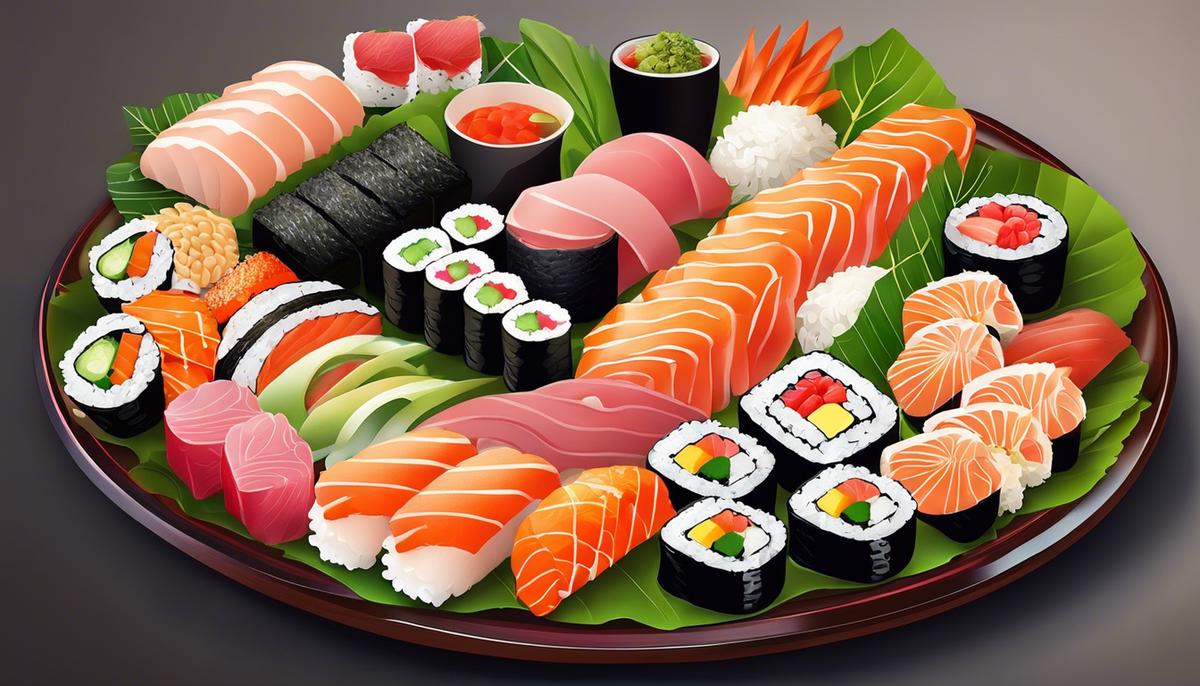
However, there is no doubt that the all-you-can-eat concept makes sushi a treat for the masses. Perhaps some purists believe that mass production and quality are incompatible, but equally, there is an opinion that all-you-can-eat sushi offers a way to enjoy sushi in an inexpensive and fun way. In addition, sushi is proving to be a healthy and nutritious option, despite the potential risks of excessive consumption. Overall, one could argue that the balance between quality and quantity, between enjoyment and reason, is the crucial element to see all-you-can-eat sushi as a blessing.


